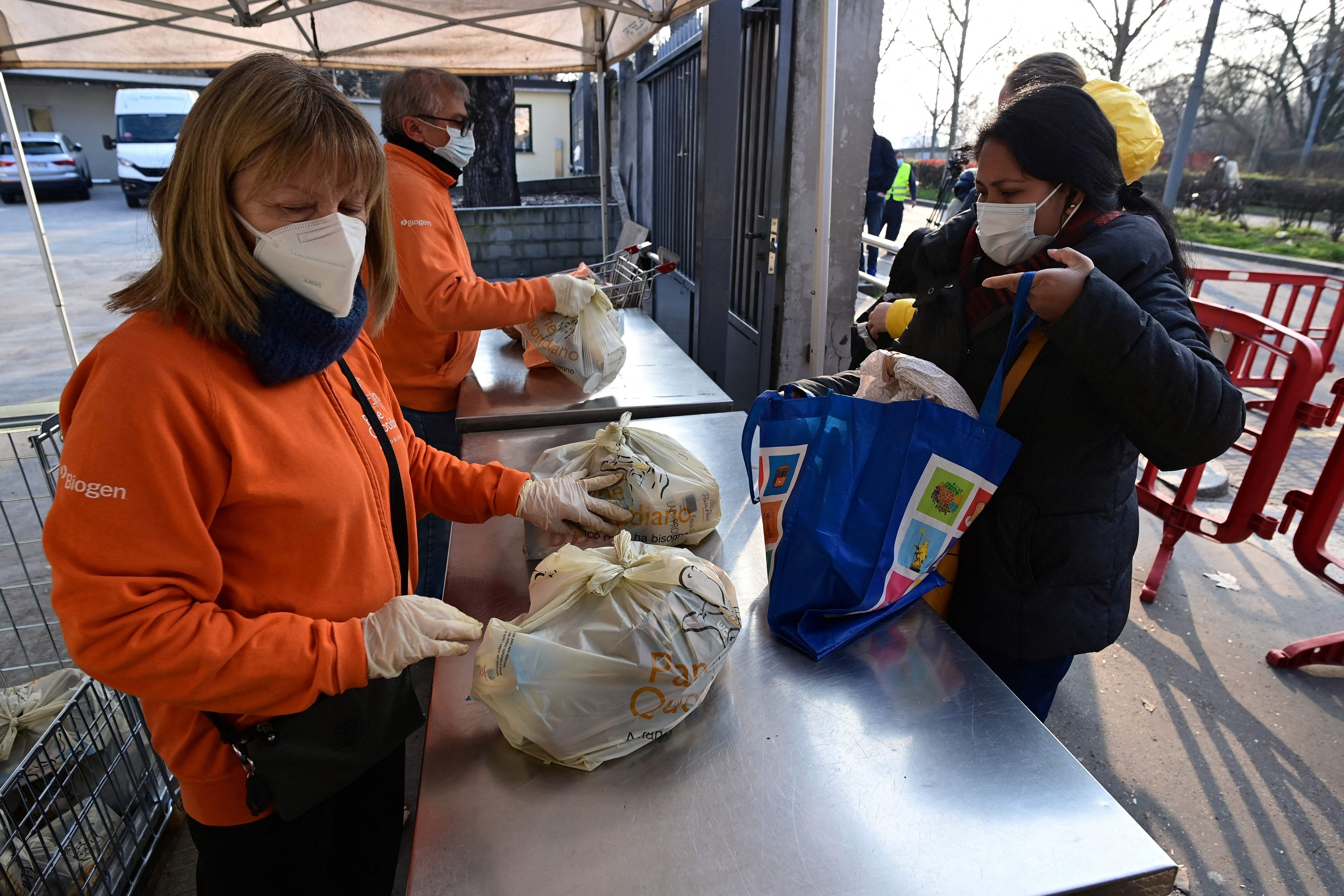MILAN (AFP) - Eyes on the ground, they queue in silence for a food parcel outside Milan's Pane Quotidiano charity.
Since the coronavirus swept across Italy a year ago, the line has grown and grown.
"I'm ashamed to be here. But otherwise I would have nothing to eat," said Giovanni Altieri, 60, who has been coming every day since the nightclub where he worked was shut under virus regulations.
He misses work - the sense of purpose and camaraderie. "I like the contact with people, I had a good salary, but I'm at rock bottom here. I have no income and live off my savings," he told AFP.
Every day, 3,500 people turn up at the two distribution points run in Milan by the charity, which hands out surplus food it receives from a range of organisations, as well as through individual donations.
Milan is the centre of Italy's industrial north and one of the richest cities in Europe. But as the pandemic has battered the country, poverty rates have soared, even here.
Hidden faces
Some of those standing in line hide their faces with a scarf or even a plastic bag, fearful of being recognised.
Many leave with several packages - one for each member of their family. Inside, there is milk, yoghurt, cheese, biscuits, sugar, tuna, a kiwi, a tiramisu and some bread.
Such sights were rare on the streets of Milan, but across the wealthy north of Italy, more than 720,000 people have fallen below the poverty line in the last year.
Throughout Italy, the number of people in poverty jumped by one million in 2020 to 5.6 million, a 15-year high, according to national statistics agency Istat. The percentage of poor is higher in the south, which has always struggled more, but at 11.1 per cent, compared to 9.4 per cent in the north, the gap is narrowing.
"The queues have increased with Covid, there are more young people and more undeclared workers who have no right to social benefits," said Claudio Falavigna, a 68-year-old volunteer at Pane Quotidiano, which has been running for 123 years. "And there are also members of the middle classes, from the world of entertainment and events," he said. He recognises them "as they still dress well, they are elegant - it's a question of dignity".
Pre-pandemic, the region of Lombardy, which includes Milan, accounted for 22 per cent of Italy's GDP. In 2019, the region had a per capita income of 39,700 euros (S$63,500) a year - well above the European average. But it was also the epicentre of the coronavirus outbreak last year that knocked Italy off its feet, and has so far left more than 100,000 people dead.
Pandemic shock

So what happened? "The shock of the pandemic reduced to zero the revenues of many categories of workers, notably the self-employed, who number many in the towns of the north," David Benassi, professor of sociology at the Bicocca University in Milan, told AFP. And although a new citizenship income for the lowest paid came into effect in 2019 and is widespread in the south of Italy, many in the north often fall through the cracks of state support.
"Many families who fell into poverty in 2020 don't fulfil the income and asset requirements," said Benassi. The worst hit are women and young people, who often have precarious jobs, noted Mario Calderini, professor of social innovation at Milan Polytechnic.
"Women have paid a heavy price in this crisis, as have families with underage children," he said. Amina Amale, 52, was a cleaning lady before coronavirus but now stands in line for the food packages.
"With coronavirus, everything is closed, there's no work," she said.











